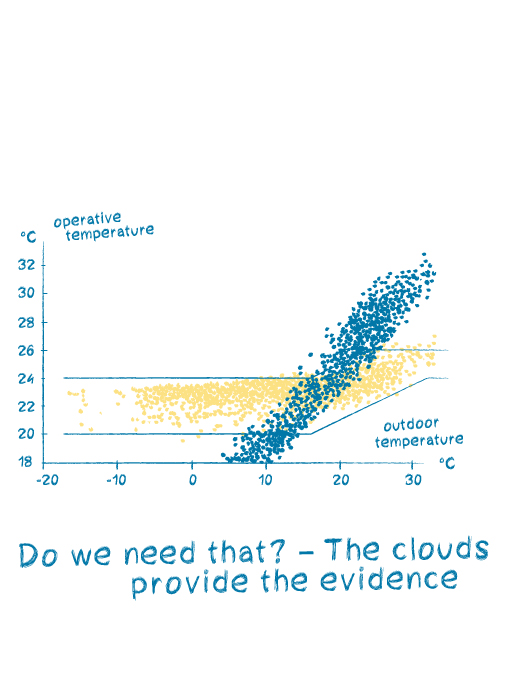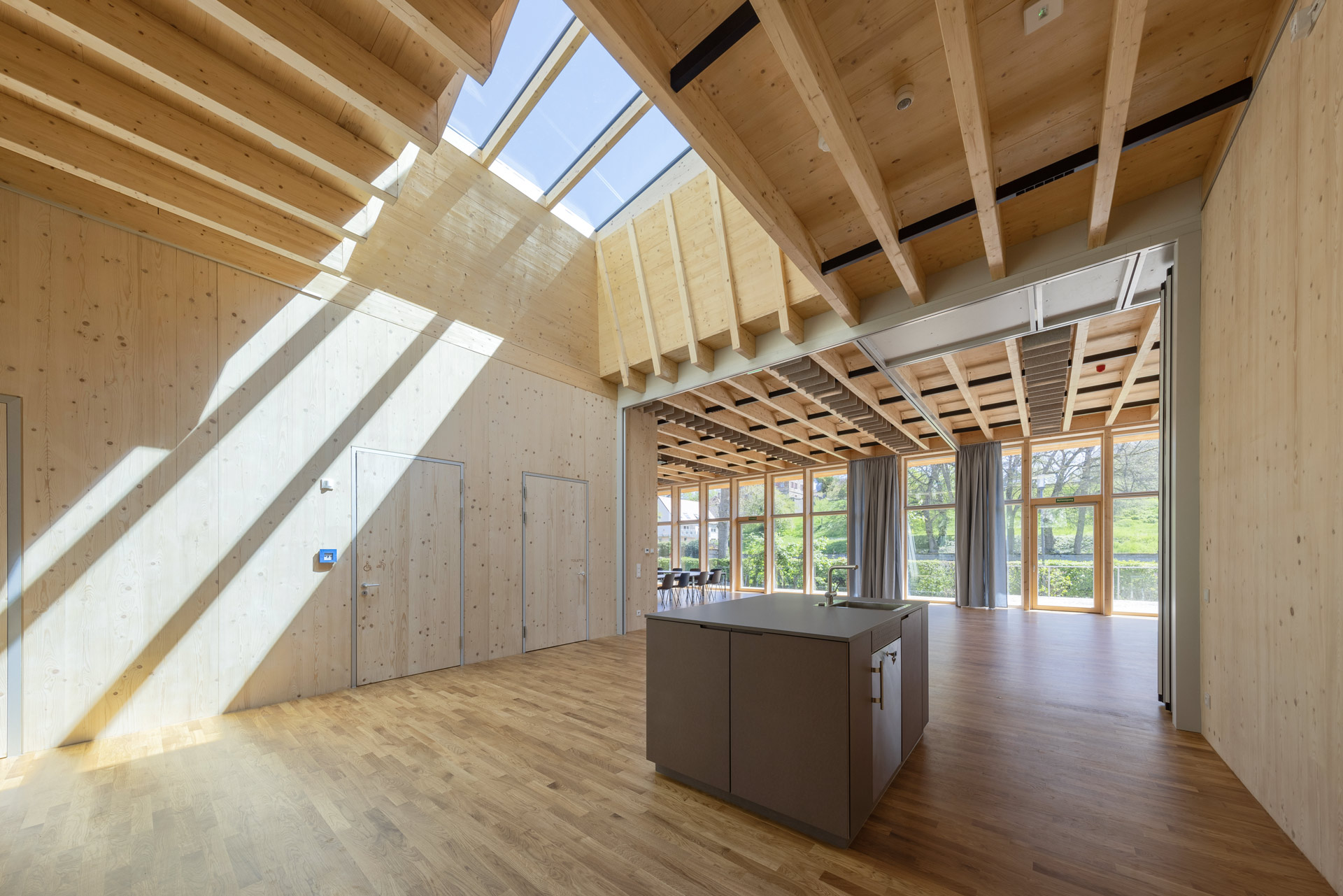New Parish Hall, Heroldsberg, Germany


The Protestant parish has a new building that can be used in a variety of ways; it is open, inviting and sustainable. It complements the old St. Matthew's church. Preserving the existing trees on the site and rejuvenating hedges, alongside planting new trees, were key priorities. An essential aspect was avoiding the sealing of surfaces, leading to a predominantly green roof and a water-permeable paving system. The sloping surfaces efficiently drain excess water into green spaces.
The freestanding hybrid structure, constructed primarily from wood and minimal concrete, is supported by eight ductile cast iron piles drilled 50 meters deep into the ground. These serve as heat probes, tapping into sustainable energy sources for the building's temperature regulation. A connection to the gas grid is not necessary, as a heat pump operates here, powered by electricity supplied in part by the building's integrated photovoltaic panels. The new building is in the immediate vicinity of two castles, which is why their listed status requires the arrangement of the PV modules to be restricted to the canopy.
Transsolar provides thermal building simulations to evaluate the impact of various design components on thermal comfort using site-specific weather data. The simulation models include the building geometry and building component structures and utilize the varying user scenarios, ventilation strategies and room conditioning systems. A dynamic thermal building simulation predicts the expected temperature in the room under consideration of the selected conditions for every hour of the year. Plotting these values in a graph over the simultaneously prevailing outside temperature produces point clouds that show how good the thermal comfort is in the different seasons. This allows different concept components such as solar shading, natural ventilation or active heating and cooling to be analyzed by comparing variants. The calculations also provide certainty when it comes to limiting the technology to what is necessary. In the community center, it was thus possible to omit additional heating- and cooling ceilings.
The underfloor heating transfers the heat into the rooms or provides cooling in summer if required. The mechanical ventilation works with efficient heat recovery in winter. The system can also cool the supply air in summer. No chiller is required for this, only water is needed. Transsolar has proposed an adiabatic cooling system. This sprays water into the exhausted air, which cools it drastically and makes it ready to absorb heat from the supply air with the help of the heat exchanger but without humidifying it.
Transsolar's daylight simulations contributed to arranging the windows to maximize natural light in interior spaces year-round, reducing the need for artificial lighting during the day. In the summer, the surrounding roof overhang, rows of trees, and external vertical awnings provide targeted shading and protection from overheating. In the winter months, when the sun is low in the sky and the leaves have fallen, the sun's rays benefit the community center and its solar input is welcome. Inside, light awnings provide glare control and curtains provide good acoustics and darkening for events.
The heating system of the community center is designed for low supply temperature. On the one hand, underfloor heating should not be operated with high flow temperatures for comfort reasons, and on the other hand, it is energetically sensible, as the heat pump requires very little drive energy, i.e., electricity; experts speak of a high Coefficient of Performance (COP) of the heat pump. It always provides heat in sufficient quantity.
Equally favorable is the so-called high-temperature cooling system, for which the – relatively high – temperature of the geothermal energy is sufficient for free cooling. No active cooling is required for this, the heat pump's compressor is at rest. Only liquid needs to be circulated to dissipate excess heat.
2024 Prädikat KlimaKulturKompetenz: Energieeffizienz und Klimaanpassung






